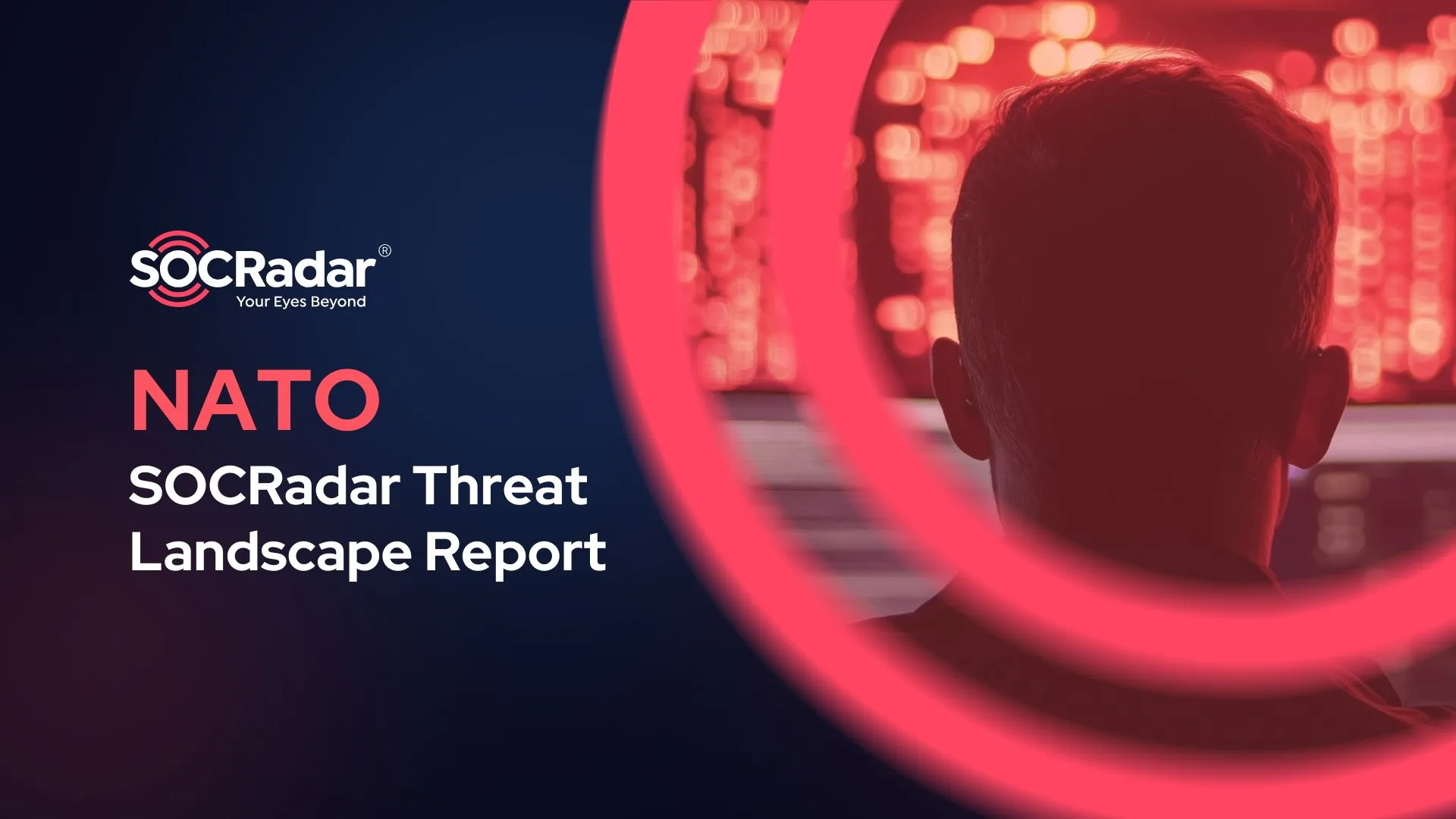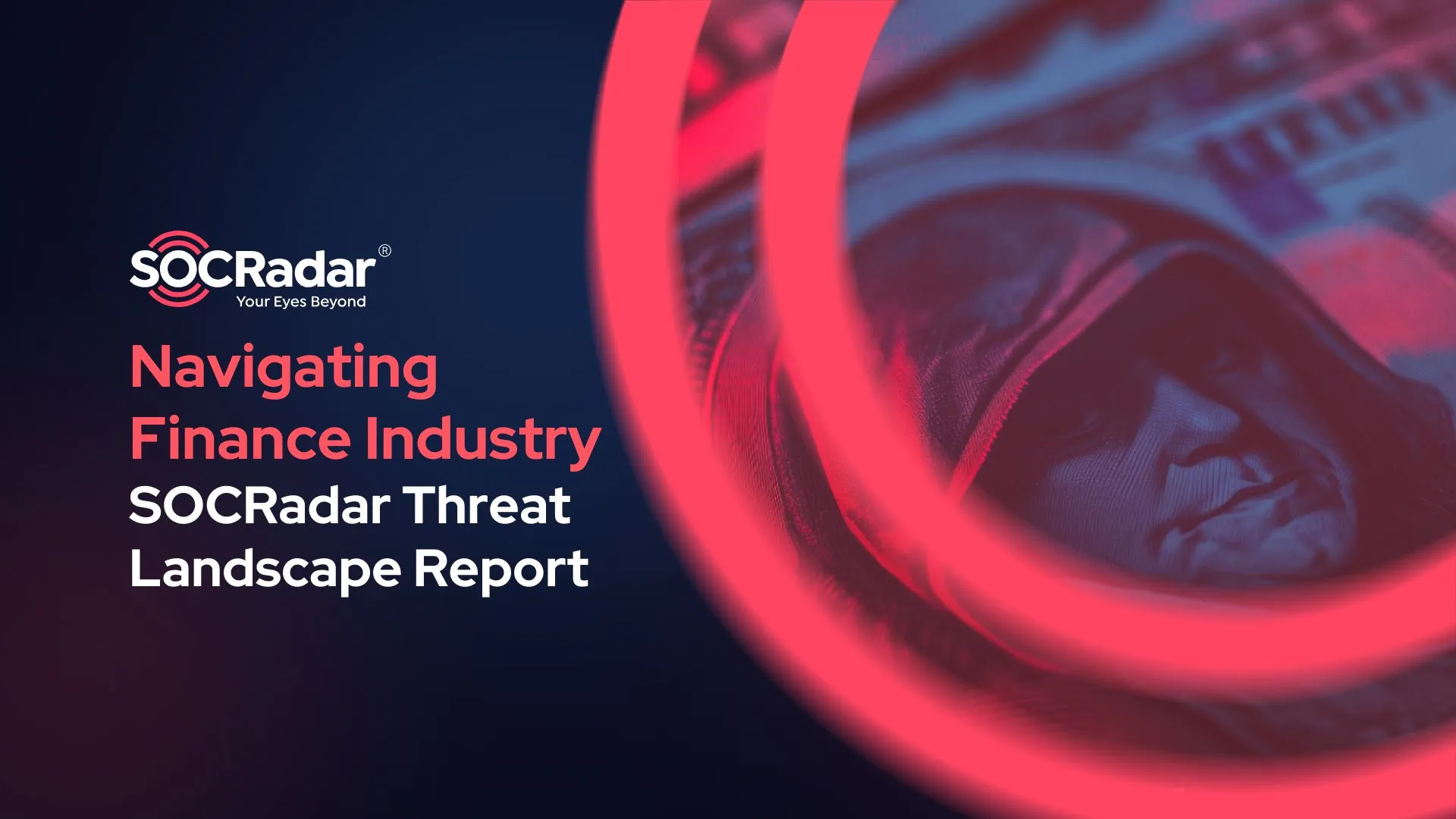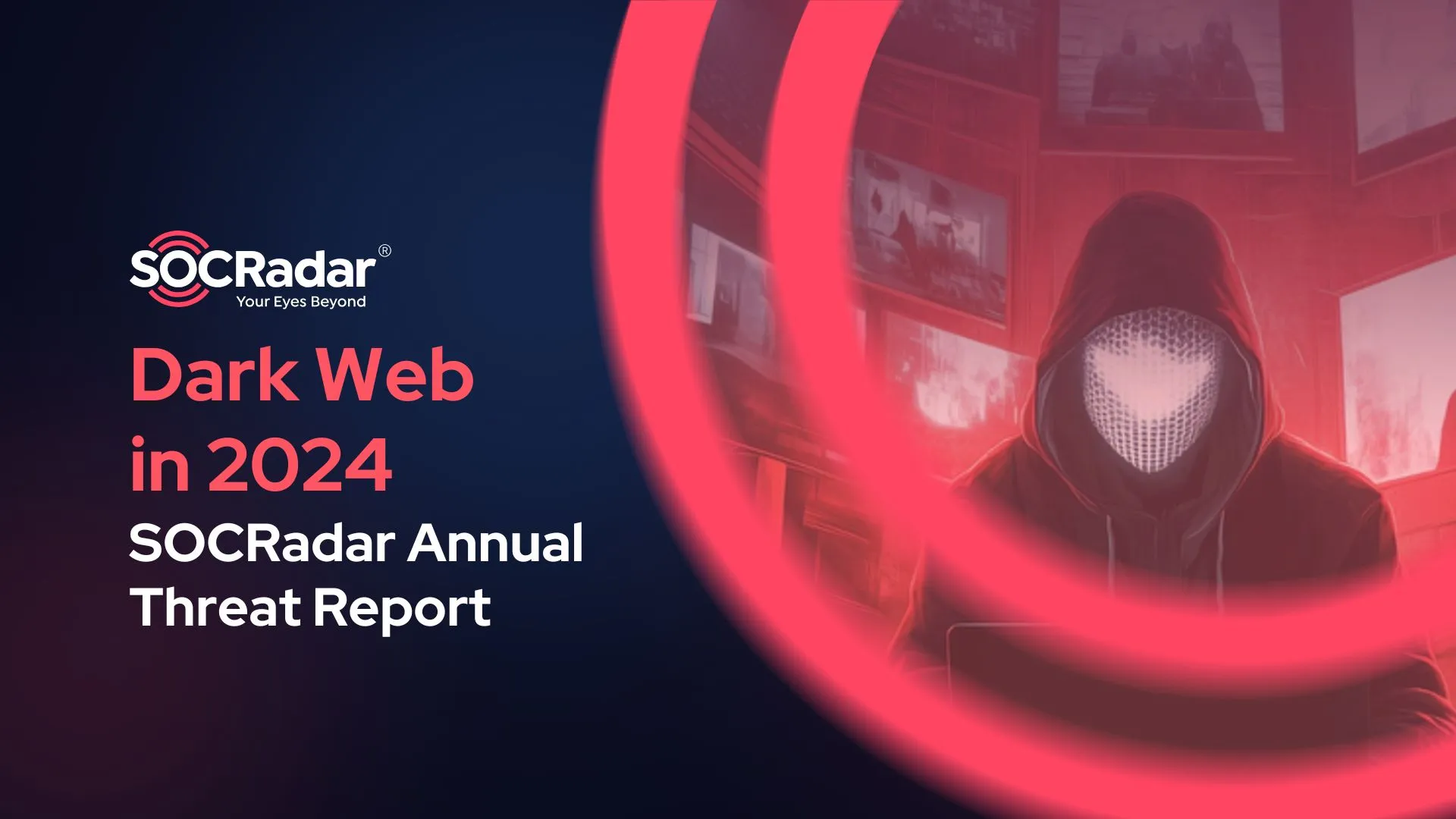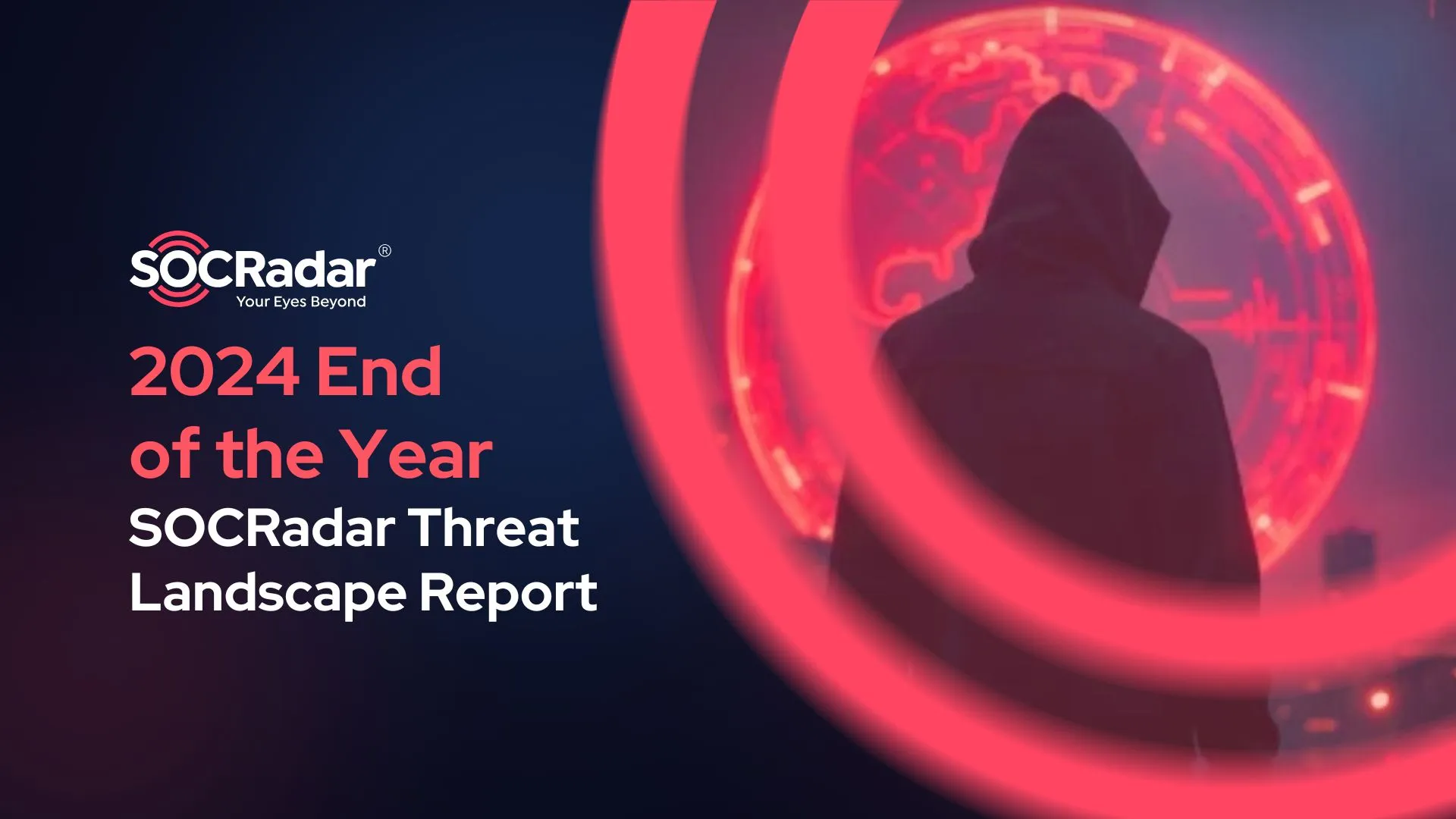
7 Lessons Learned from Cyber Attacks in the Manufacturing Industry
SOCRadar’s Manufacturing Threat Landscape Report provides valuable insights into the manufacturing industry’s cybersecurity threats and offers recommendations to strengthen your organization’s security. Based on our comprehensive study and findings, several lessons have been learned that can significantly inform the cybersecurity strategy for the manufacturing industry.
Here are seven lessons learned from attacks in the manufacturing industry. Don’t forget to read our industry-specific threat landscape report.
1. Increasing Cyber Threats
The manufacturing sector is increasingly becoming a high-priority target for cybercriminals. Regardless of the industry not being frequently highlighted in mainstream media, the threat statistics indicate an escalating trend of attacks, especially involving state-sponsored actors. SOCradar’s threat intelligence platform can help by providing real-time alerts on potential threats, enabling swift response actions.
2. Growing Relevance of Darknet
The darknet has become a hub for threat actors to coordinate and launch attacks. Constant monitoring and using threat intelligence platforms like SOCradar that track darknet activities can provide valuable insights to prevent potential cyberattacks.
Stay ahead of cyber threats lurking in the Dark Web with SOCRadar’s Threat Intelligence module. Gain valuable insights and proactively monitor potential risks. Enhance your security strategy and protect your organization from emerging threats.
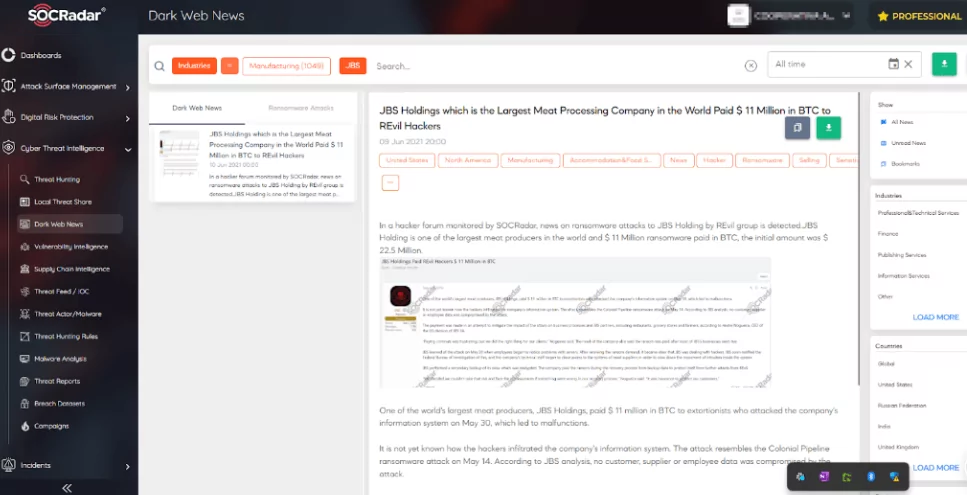
3. Critical Role of OT and ICS Security
Operational Technology (OT) and Industrial Control Systems (ICS) are pivotal to the manufacturing sector and are major targets for cybercriminals. SOCradar’s capabilities can ensure security by providing comprehensive visibility and actionable intelligence on OT and ICS threats.
4. Rise of Sophisticated Cyber Attacks
Cyber attacks have grown more sophisticated, incorporating AI and machine learning to bypass traditional security measures. SOCradar’s advanced threat detection technology, informed by ML, can match these threats’ complexity and help identify them in the early stages.
5. Significance of Proactive Measures
The need for proactive cybersecurity measures over reactive ones is evident. This includes conducting cyber risk assessments, implementing robust cybersecurity protocols, and continuous employee training. SOCradar’s proactive threat-hunting capabilities enable organizations to stay one step ahead of potential cyber threats.
Empower your defenses with SOCradar’s Vulnerability Intelligence module. Stay one step ahead of potential threats by proactively identifying and addressing vulnerabilities.
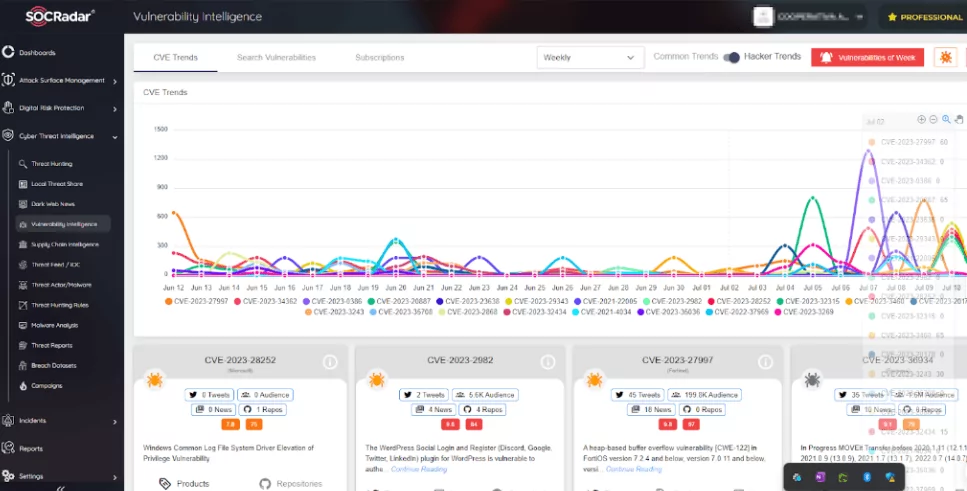
6. IP Protection
Protecting Intellectual Property (IP) is crucial as its theft can have disastrous implications for manufacturing businesses, potentially enabling competitors to gain a competitive advantage.
Putting an exact figure on the cost of intellectual property theft is difficult, but some estimates exist. In its most recent report, the Commission on the Theft of American Intellectual Property stated that the theft of trade secrets costs the U.S. economy between 1% and 3% of its Gross Domestic Product (GDP). That translates to between US$180 billion and US$540 billion annually. Besides the economic toll, IP theft is also known to affect more than 45 million jobs in the United States alone.
SOCradar can assist by identifying potential IP-related risks and threats on the internet and dark web.
7. Importance of Comprehensive Supply Chain Security
With supply chains becoming a target for cybercriminals to gain access to critical business systems, it’s vital to ensure comprehensive supply chain security. SOCradar can provide critical insights into third-party vendors’ cybersecurity posture, helping safeguard the supply chain.
Gain valuable insights into cyber incidents impacting your business partners with SOCRadar’s Supply Chain Intelligence. Gain comprehensive visibility and stay informed about the cybersecurity landscape of the companies you collaborate with.
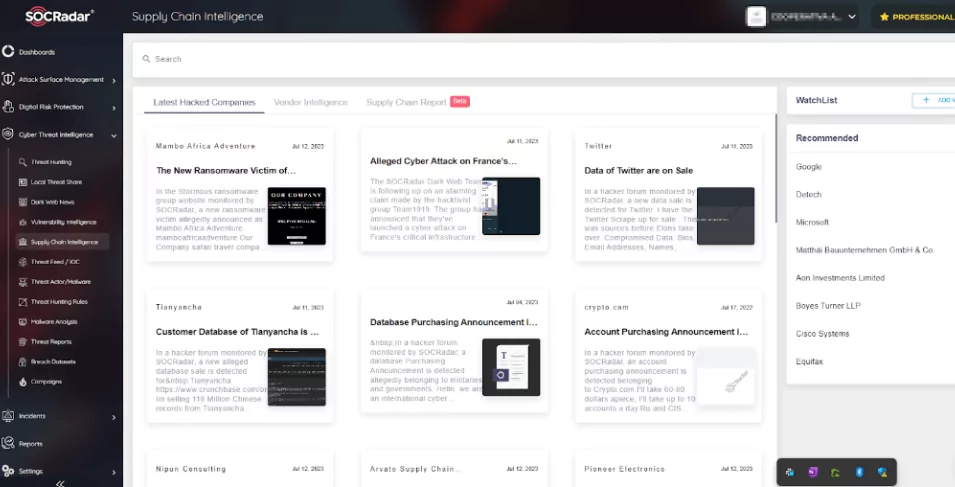
Recommendations For CISOs in the Manufacturing Industry
As gatekeepers of our respective organizations’ cyber defenses, we have the distinct challenge and privilege of navigating the ever-evolving landscape of cyber threats. SOCRadar analysis marks our ongoing commitment to providing actionable intelligence to defend our organizations against potential cyber threats and ensure a shared understanding within the cybersecurity community.
Through our continuous monitoring, research, and reporting, SOCRadar aims to equip you with the latest knowledge and effective tools necessary for reinforcing your cybersecurity measures. While not always the centerpiece of conversations in cybersecurity circles, the manufacturing industry consistently ranks high in the list of industries most targeted by cyber attacks. One likely factor contributing to this high-threat activity is state-sponsored actors’ involvement.
Unlike the more commonly seen cybercriminals primarily motivated by financial gains, these actors often have more complex motives, such as causing disruptions to key industries, Intellectual Property (IP) theft, and asserting geopolitical power. As such, their strategies and tactics often involve a wider range of threats and more advanced techniques than typically encountered.
The manufacturing industry is a crucial pillar of our economies and a key component of our societies. It’s an industry that transforms raw materials into the products we all rely on daily, and consequently, any disruption can have far-reaching impacts.
SOCRadar’s report provides an encompassing view of the current cyber threat landscape, highlighting particular threats that deserve our attention. While ransomware and phishing attacks continue to pose significant risks, this report goes beyond these to explore the substantial risks posed by Intellectual Property theft, data spillages, supply chain attacks, and equipment sabotage.
SOCRadar’s analysis shows that the manufacturing industry is no longer a peripheral target but a central focus of sophisticated cybercriminals. The report identifies various threats, from the growing dark web marketplace for malicious software to the rise of nation-state attacks. However, the primary concern we want to emphasize is threats to Operational Technology (OT) and Industrial Control Systems (ICS) due to their critical roles in manufacturing operations.
Ransomware attacks continue to pose significant risks. However, this report offers a broader view, pointing out the substantial risk of Intellectual Property theft, internal breaches, supply chain attacks, and equipment sabotages. The pivot to remote work has presented new security challenges that need our attention.
Protecting remote workers’ devices and ensuring secure connections to our networks are essential. Remote workers should receive adequate training on best cybersecurity practices, and their devices should comply with the organization’s security standards.
The dark web has become an increasingly active platform for cybercriminals to exchange information and tools. To mitigate this, companies in this industry should enhance their efforts in dark web monitoring, spotting potential threats early, and taking appropriate action.
Here are some actionable recommendations for CISO’s:
- Prioritize OT and ICS Security: Given the potential for disruption and damage, security protocols for OT and ICS should be as stringent as those for IT systems.
- Review and Strengthen Security Infrastructure: Implement advanced threat detection solutions, regular penetration testing, and security audits to identify and mitigate vulnerabilities.
- Strengthen Supply Chain Security: Conduct regular security audits of your suppliers and third-party partners to ensure they follow best cybersecurity practices.
- Enhance Employee Training: Regular cybersecurity awareness training can help reduce the risks of phishing, data spillage, and other user-related vulnerabilities.
- Dark Web Monitoring: Tools such as SOCradar can help track threats specific to your organization on the dark web, enabling proactive response.
- Develop Incident Response Plans: A well-structured and practiced incident response plan helps minimize damage and recovery time from potential cyber-attacks.
SOCRadar provides Extended Threat Intelligence (XTI) that combines: “Cyber Threat Intelligence, Digital Risk Protection, and External Attack Surface Management Services.” SOCRadar provides the actionable and timely intelligence context you need to manage the risks in the transformation era.





























